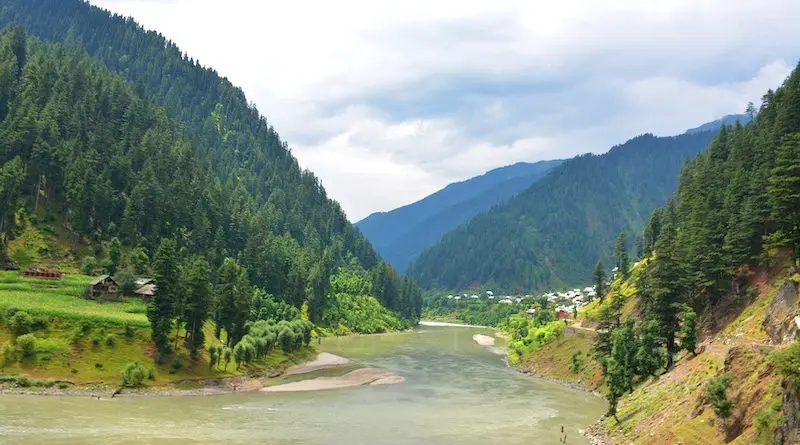Unveiling The Environmental Toll: Climate Crisis And Tourism Surge In AJK’s Neelum Valley – OpEd
Recently, there’s been growing concern over climate change, viewed as a significant threat to global security. As the UK’s former Permanent Representative to the United Nations, Ambassador Emyr Jones Parry emphasized in the UN Chronicle, climate change extends beyond environmental issues, posing a grave risk to global stability.
Many nations, notably in Africa and North America, are increasingly grappling with climate-related challenges. For example, Hurricane Matthew in 2016 inflicted damage in Haiti equivalent to about a third of its economy, as estimated by the World Bank. Moreover, German Watch’s Climate Risk Index identifies six African nations among the top ten most affected countries by climate change, while Pakistan ranks 8th on this list. Manifestation of this threat in Pakistan was the devastating floods in 2022, which submerged one-third of the entire country and caused a reported loss of more than 14 billion dollars.
Concern about climate change began gaining attention after the Cold War, but the intensity of this threat has increased significantly in the last two decades. Coincidentally, the trend of tourism has also surged in the last two decades. In some countries, the correlation between tourism and environmental degradation is low. However, in ecologically vulnerable areas, this correlation is high. For example, scholars have established a strong correlation between tourism and environmental degradation in Indonesia through their research. The studies have proven that massive tourist activities have caused environmental degradation in Indonesia. The Indonesian Government is now seriously considering regulating tourism to prevent further loss.
The state of Azad Jammu and Kashmir (AJ&K) has seen an upsurge in tourism in the last decade, particularly after the 2003 ceasefire on the Line of Control. The tourist influx in AJ&K reached 1.4 million in 2018. Tourist activities saw a downfall in 2020 due to COVID-19 restrictions, but by 2023, the influx had surpassed 1.5 million. The most visited tourist sites are Rawalakot, Havelli, Leepa, and Neelum Valley. Neelum Valley, coincidentally, has seen the worst manifestations of climate change in the form of cloud bursts. In the last five years, five cloud bursts have ravaged Neelum Valley, claiming hundreds of lives and causing huge economic losses. This must be correlated with the increased tourism.
Neelum Valley is distinguished among all districts of AJ&K because it is home to all of AJ&K’s glaciers. A study published in the Pakistan Journal of Meteorology indicates that there are over 224 glaciers containing ice reserves of about 4.9 cubic km, mainly concentrated in the Neelum Valley district of AJ&K. The glaciated area stretches over 109 sq km, which is about 0.8% of the total Kashmir area. Unfortunately, these glaciers are melting at an alarming pace.
According to another study by Sardar Muhammad Rafique Khan, published in the Journal of Earth Science & Climatic Change the glacier deposit area declined from 15,110 hectares in 2000 to 13,520 hectares in 2010, indicating a melt of 1,590 hectares in ten years. This accelerated rate continued, with the glacier area further reducing to 11,350 hectares by 2017, representing a melt of 2,170 hectares in just seven years. A total of 3,760 hectares of glacier melting occurred from 2010 to 2017. On average, this indicates a loss of 220 hectares of glaciers every year since 2000.
So, not only has the frequency of cloud bursts and glacier retreat increased in the last two decades, but the ecology has also been severely impacted. Local sources have reported significant changes in Neelum Valley in recent years. These sources mentioned a very delicate and thin but visible layer that existed around lakes like Patliyan and Ratti Gali. Human activities have increased around these two lakes, and that layer has vanished from sight.
Secondly, there used to be a particular fragrance of some wild herbs in the high-altitude areas of Neelum Valley that was famously known giving the visitors an unconventional fragrance, which has also been gradually diminishing. The government has not paid any attention to conducting in-depth studies to explore these impacts further.
From 1980 to 2003, Neelum Valley rarely saw any vehicles or carbon emissions because transportation in the area was blocked due to LoC firing. After the ceasefire on the LoC, traffic flow was allowed, not only for locals but also for tourists to explore the beauty of the valley. This sudden surge in vehicle movement has contributed to carbon emissions in this pristine area. Littering by tourists and the increase in construction activities have further polluted the environment.
AJ&K government announced its climate change policy in 2017, in which reforms for the tourism sector were also recommended. However, even after seven years of the enactment of the policy, the implementation remains a pipe dream. The fact cannot be refuted that crafting such a policy and initiatives ‘ Eco-Friendly’ was timely and they possessed ample elements to assuage the ever-increasing climate woes caused by the change in the climate pattern in the state. The need of the hour is that the government should take serious steps to regulate tourism in AJ&K, particularly in ecologically vulnerable areas to protect the precious ecological system.

